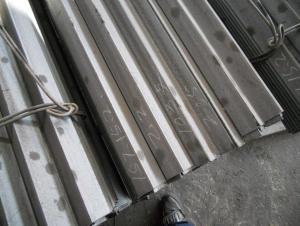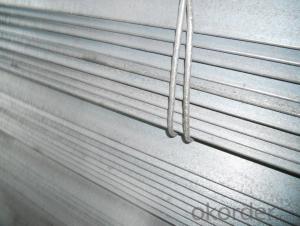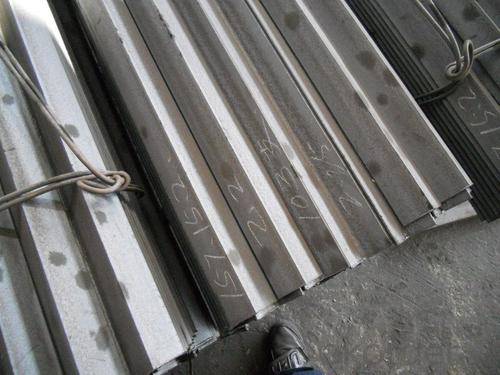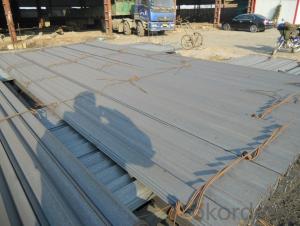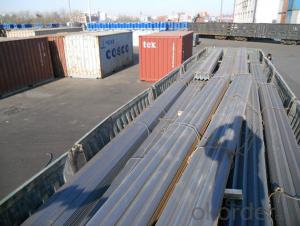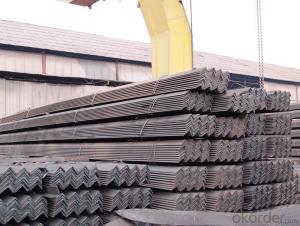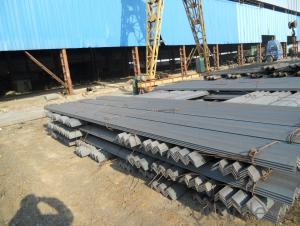Steel Angle Unequal Angle Made in China with High Quality for Construction
- Loading Port:
- China main port
- Payment Terms:
- TT OR LC
- Min Order Qty:
- 25 m.t.
- Supply Capability:
- 20000 m.t./month
OKorder Service Pledge
OKorder Financial Service
You Might Also Like
Specification
Product Description:
OKorder is offering Steel Angle Equal Angle with High Quality for Construction at great prices with worldwide shipping. Our supplier is a world-class manufacturer of steel, with our products utilized the world over. OKorder annually supplies products to European, North American and Asian markets. We provide quotations within 24 hours of receiving an inquiry and guarantee competitive prices.
Product Applications:
Steel Angle Unequal Angle Made in China with High Quality for Construction are ideal for structural applications and are widely used in the construction of buildings and bridges, and the manufacturing, petrochemical, and transportation industries.
Product Advantages:
OKorder's Steel Angle Unequal Angle Made in China with High Quality for Construction are durable, strong, and resist corrosion.
Main Product Features:
· Premium quality
· Prompt delivery & seaworthy packing (30 days after receiving deposit)
· Corrosion resistance
· Can be recycled and reused
· Mill test certification
· Professional Service
· Competitive pricing
Packaging & Delivery of Steel Angle Unequal Angle Made in China with High Quality for Construction:
Packaging Detail: products are packed in bundle and then shipped by container or bulk vessel, deformed bar is usually naked strapping delivery, when storing, please pay attention to moisture proof. The performance of rust will produce adverse effect.
Each bundle weight: 2-3MT, or as required
Payment term: TT or L/C
Delivery Detail: within 45 days after received advanced payment or LC.
Label: to be specified by customer, generally, each bundle has 1-2 labels
Trade terms: FOB, CFR, CIF
Images:
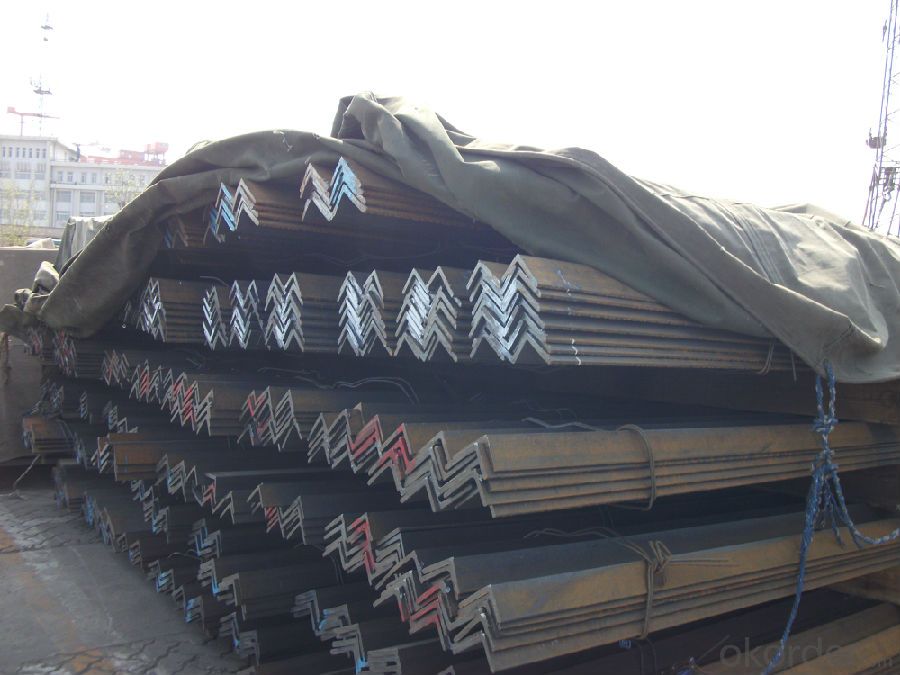
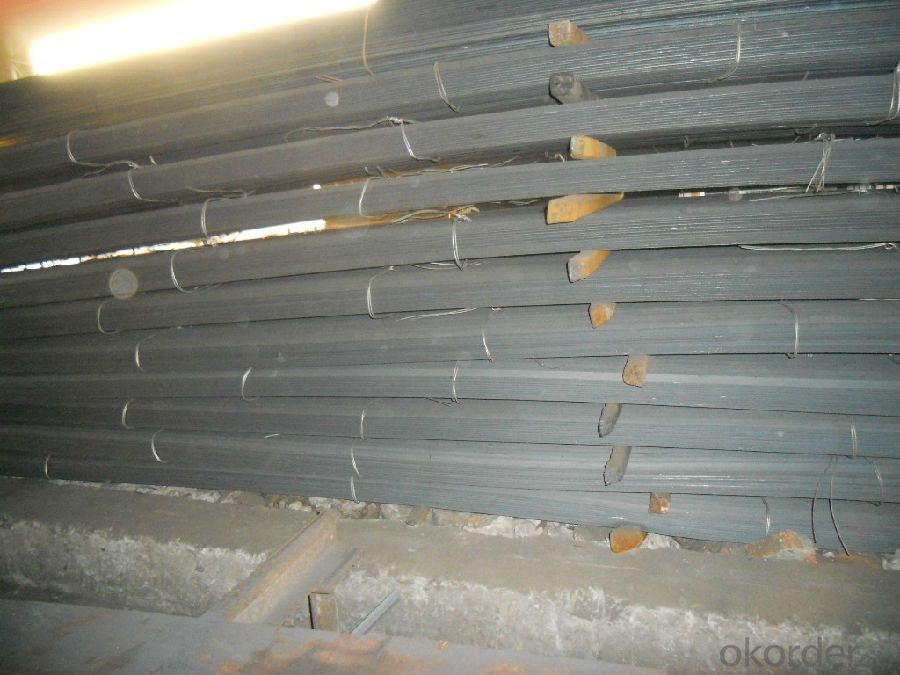
- Q: What are the different grades of steel used in manufacturing steel angles?
- The different grades of steel used in manufacturing steel angles vary depending on the specific requirements and intended applications. Some common grades include A36, A572, and A588. A36 is a low carbon steel that is often used in general structural applications. A572 is a high-strength, low-alloy steel that is commonly used in construction and engineering projects. A588 is a weathering steel that is known for its corrosion resistance and is often used in outdoor structures.
- Q: Are steel angles suitable for manufacturing support brackets for pipes?
- Yes, steel angles are suitable for manufacturing support brackets for pipes. Steel angles are known for their strength, durability, and load-bearing capacity, making them an ideal choice for supporting and securing pipes in various applications. The angled shape of steel angles provides stability and structural integrity to the support brackets, ensuring that the pipes remain securely in place. Additionally, steel angles can be easily fabricated, welded, and customized to meet specific requirements, making them a versatile and cost-effective option for manufacturing support brackets for pipes.
- Q: What are the different methods for cutting steel angles?
- There exists a variety of techniques for cutting steel angles, depending on specific requirements and the tools at hand. Some commonly utilized methods include: 1. Manual cutting: This entails employing a handheld hacksaw or a metal cutting bandsaw to slice through the steel angle. It necessitates significant labor and may not be suitable for large-scale projects or precise cuts. 2. Abrasive cutting: This approach leverages an abrasive wheel or disc to grind through the steel angle. It is typically achieved using an angle grinder or a chop saw. Abrasive cutting is faster than manual cutting and can yield reasonably accurate cuts. 3. Plasma cutting: Plasma cutting involves employing a high-temperature plasma arc to melt through the steel angle. It is an adaptable method that swiftly and accurately cuts through thick steel angles. However, it necessitates specialized equipment and may not be appropriate for small-scale or on-site projects. 4. Laser cutting: Laser cutting utilizes a high-powered laser beam to melt through the steel angle. It is a precise and efficient method that can generate intricate cuts with minimal heat-affected zones. Laser cutting is commonly employed in industrial settings and necessitates specialized equipment. 5. Waterjet cutting: Waterjet cutting utilizes a high-pressure jet of water mixed with abrasive particles to slice through the steel angle. It is a versatile method that yields precise cuts without generating heat or causing distortion. Waterjet cutting is commonly employed in industries where heat-affected zones and material distortion are concerns. 6. Shearing: Shearing involves applying a cutting force to the steel angle using a shear machine, resulting in it fracturing along a predetermined line. It is a swift and efficient method for straight cuts and is commonly employed for high-volume production. The selection of the cutting method hinges on various factors, such as the size and thickness of the steel angle, the desired cut accuracy, the availability of equipment, and the project requirements. It is crucial to consider specific needs and limitations before choosing the most suitable cutting method.
- Q: Can steel angles be used for supports in construction?
- Yes, steel angles can be used for supports in construction. Steel angles are commonly used in construction projects as structural supports due to their strength and versatility. They can be used in various applications such as supporting beams, columns, and frames. Steel angles provide stability and rigidity to the structure, making them suitable for supporting heavy loads and withstanding forces such as gravity and wind. Additionally, they can be easily welded or bolted together, allowing for quick and efficient installation. Overall, steel angles are a popular choice for construction supports due to their durability, strength, and ease of use.
- Q: How do you calculate the load distribution on a steel angle?
- To calculate the load distribution on a steel angle, you need to consider the geometry and properties of the angle as well as the applied load. Here are the steps to calculate the load distribution on a steel angle: 1. Determine the dimensions and properties of the steel angle: Measure the length, width, and thickness of the angle. Also, determine the material properties such as yield strength and modulus of elasticity. 2. Determine the location of the applied load: Identify where the load is being applied on the steel angle. This could be at a single point or distributed along the length of the angle. 3. Calculate the moment of inertia: The moment of inertia represents the resistance of the steel angle to bending. It depends on the dimensions and shape of the angle. You can calculate the moment of inertia using standard formulas or refer to appropriate tables for common steel angle shapes. 4. Calculate the bending stress: Once you have the moment of inertia and the applied load, you can calculate the bending stress using the formula: bending stress = (M * c) / I, where M is the applied moment, c is the distance from the neutral axis to the extreme fiber, and I is the moment of inertia. 5. Determine the load distribution: The load distribution on the steel angle depends on the bending stress. The angle will experience higher stress at points farther from the neutral axis, resulting in a non-uniform load distribution. You can plot the stress distribution along the angle to visualize the areas of higher and lower stress. 6. Verify the load capacity: Finally, compare the calculated load distribution with the load capacity of the steel angle. The load capacity is typically determined by the yield strength of the material and the safety factor applied. Ensure that the calculated load distribution does not exceed the load capacity to ensure the angle's structural integrity. It is important to note that these calculations are simplified and assume ideal conditions. In practical applications, factors such as deformation, buckling, and support conditions may need to be considered, and consulting structural engineering resources or professionals is recommended.
- Q: How do steel angles perform in earthquake-prone regions?
- Steel angles perform well in earthquake-prone regions due to their high strength and flexibility. They are commonly used in structural systems to resist lateral forces and provide stability during seismic events. The angular shape of the steel angles helps in distributing the seismic forces effectively, reducing the risk of structural failure. Additionally, steel's ductility allows it to bend without fracturing, further enhancing its performance in earthquake-prone areas.
- Q: Can steel angles be used for platform structures?
- Yes, steel angles can be used for platform structures. Steel angles are commonly used in construction for their strength, durability, and versatility. They provide structural support and stability to various types of platforms, including elevated walkways, mezzanines, catwalks, and scaffolding. Steel angles offer excellent load-bearing capacity and can withstand heavy loads, making them suitable for platform structures that require a high level of strength and stability. Additionally, steel angles can be easily fabricated and joined together, allowing for efficient construction and customization of platform structures.
- Q: Can steel angles be used in decorative or architectural applications?
- Yes, steel angles can be used in decorative or architectural applications. Steel angles are versatile and can be shaped and manipulated to create various architectural elements such as decorative trims, ornamental railings, window frames, door frames, and even structural features like support brackets. Additionally, steel angles can be coated or finished in different ways to enhance their aesthetic appeal, such as by painting, powder coating, or patina finishes. Their strength and durability make them suitable for both indoor and outdoor applications, providing structural integrity while also adding a visually appealing element to the design. Overall, steel angles offer a wide range of design possibilities and can be effectively used in decorative or architectural applications.
- Q: What are the different types of steel angles connections for columns?
- Columns in construction can utilize various steel angle connections. 1. Bolted Angle Connection: A commonly employed joint involves fastening steel angles using bolts and plates, ensuring a sturdy and dependable connection to the column. 2. Welded Angle Connection: Steel angles can be directly welded to the column, offering exceptional strength and stiffness, making them suitable for heavy-duty applications. 3. Gusset Plate Connection: A flat plate, known as a gusset plate, is affixed to the column and steel angles to establish a connection. This plate may be bolted or welded to enhance strength and stability. 4. Cleat Connection: For smaller columns, a cleat, a small steel piece, can be bolted or welded to the column and steel angles, providing a straightforward and cost-effective solution. 5. Moment Connection: Designed to withstand axial and bending loads, a moment connection involves the welding or bolting of steel angles to the column. Additional reinforcing plates and stiffeners are incorporated to ensure the necessary strength and rigidity. 6. Eccentric Connection: Used when the load is applied off-center to the column, an eccentric connection involves attaching steel angles to the column in an offset position to account for the eccentric load. Ultimately, the selection of a steel angle connection for columns depends on factors such as load requirements, structural design, and construction methods. It is crucial to consider the project's specific needs and consult with a structural engineer to determine the most appropriate connection type.
- Q: How do you handle and install steel angles on a construction site?
- Handling and installing steel angles on a construction site requires careful planning and attention to detail. Here are the steps involved in handling and installing steel angles: 1. Preparing the site: Before handling steel angles, it is essential to ensure that the construction site is properly prepared. This includes clearing any debris or obstructions, ensuring a stable and level surface, and taking necessary safety precautions. 2. Measuring and marking: Accurate measurements of the steel angles' dimensions and their placement on the construction site are crucial. Using a measuring tape, determine the length, width, and thickness of the steel angles, and mark their intended locations on the site. This will ensure proper alignment and fit during the installation process. 3. Handling and transporting: Steel angles can be heavy, so it is important to use appropriate lifting equipment such as cranes, hoists, or forklifts to handle and transport them safely. Ensure that the lifting equipment is properly rated and operated by trained personnel to prevent accidents or damage to the steel angles. 4. Securing the steel angles: Once the steel angles are properly positioned, secure them in place using appropriate fasteners such as bolts, screws, or welding. The choice of fasteners depends on the specific requirements of the construction project and the load-bearing capacity of the steel angles. Make sure to follow the manufacturer's guidelines and industry standards for fastener selection and installation. 5. Checking alignment and levelness: After securing the steel angles, use a level and measuring tools to check their alignment and levelness. This step is crucial to ensure that the steel angles are installed correctly and will provide the necessary structural support. 6. Inspecting and reinforcing: Conduct a thorough inspection of the installed steel angles to ensure that they are free from any defects or damages. If any issues are identified, take appropriate measures to reinforce or replace the steel angles to maintain the structural integrity of the construction site. 7. Ongoing maintenance: Steel angles, like any other construction materials, require regular maintenance to extend their lifespan and prevent corrosion. Follow the manufacturer's recommendations for maintenance and periodically inspect the steel angles to identify and address any issues promptly. Overall, handling and installing steel angles on a construction site require careful planning, proper equipment, and adherence to safety guidelines. By following these steps, construction professionals can ensure the successful installation of steel angles, contributing to the overall strength and stability of the structure.
Send your message to us
Steel Angle Unequal Angle Made in China with High Quality for Construction
- Loading Port:
- China main port
- Payment Terms:
- TT OR LC
- Min Order Qty:
- 25 m.t.
- Supply Capability:
- 20000 m.t./month
OKorder Service Pledge
OKorder Financial Service
Similar products
Hot products
Hot Searches
Related keywords
